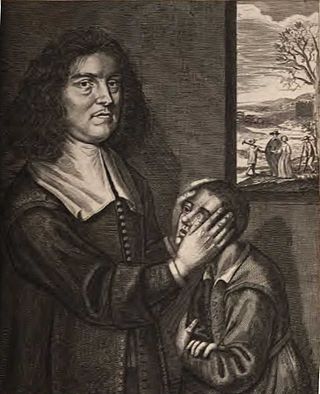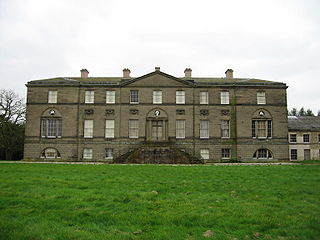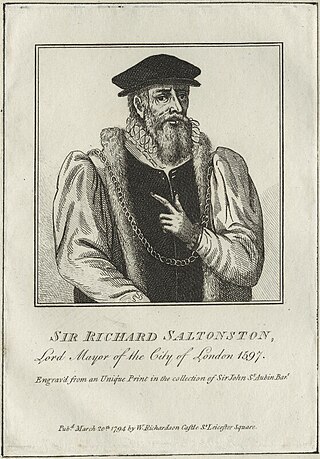Related Research Articles

The Stuart Restoration was the reinstatement in May 1660 of the Stuart monarchy in England, Scotland, and Ireland. It replaced the Commonwealth of England, established in January 1649 after the execution of Charles I, with his son Charles II.

John Evelyn was an English writer, landowner, gardener, courtier and minor government official, who is now best known as a diarist. He was a founding Fellow of the Royal Society.

Simon Harcourt, 1st Viscount Harcourt, PC of Stanton Harcourt, Oxfordshire, was an English Tory politician who sat in the English and British House of Commons from 1690 until 1710. He was raised to the peerage as Baron Harcourt in 1711 and sat in the House of Lords, becoming Queen Anne's Lord High Chancellor of Great Britain. He was her solicitor-general and her commissioner for arranging the union with Scotland. He took part in the negotiations preceding the Peace of Utrecht.

Earl of Shaftesbury is a title in the Peerage of England. It was created in 1672 for Anthony Ashley-Cooper, 1st Baron Ashley, a prominent politician in the Cabal then dominating the policies of King Charles II. He had already succeeded his father as second Baronet of Rockbourne in 1631 and been created Baron Ashley, of Wimborne St Giles in the County of Dorset, in 1661, and he was made Baron Cooper, of Paulett in the County of Somerset, at the same time he was given the earldom.
Sir Thomas Moulson, an alderman and member of the Grocers' Company, was a Sheriff of London in 1624 and Lord Mayor of London in 1634. He represented the City of London as a Member of Parliament in 1628.
Lady Anne Moulson, born Anne Radcliffe (1576–1661), was an early benefactor of the fledgling colonial Harvard College. She is remembered today in the name of the Radcliffe Institute for Advanced Study.

Valentine Greatrakes, also known as "Greatorex" or "The Stroker", was an Irish faith healer who toured England in 1666, claiming to cure people by the laying on of hands.

The Broughton, later Broughton-Delves, later Broughton Baronetcy, of Broughton in the County of Stafford, is a title in the Baronetage of England. It was created on 10 March 1661 for Sir Brian Broughton, of Broughton Hall, near Eccleshall, Staffordshire, High Sheriff of Staffordshire from 1660 to 1661 and the member of an ancient Staffordshire family.

Sir Allen Apsley was an English landowner who was a Royalist soldier and administrator during the Wars of the Three Kingdoms. Following the 1660 Stuart Restoration, he took part in the Second Anglo-Dutch War, and sat as MP for Thetford from 1661 to 1679. One biographer describes him as having an "ability to maintain friendly contact with figures across a wide range of affiliations, which helped to make him a successful political fixer".

Charles (Medows) Pierrepont, 1st Earl Manvers was a British naval officer and politician who sat in the House of Commons from 1778 to 1796 when he was raised to the peerage as Viscount Newark.

Nicholas Wadham of Merryfield in the parish of Ilton, Somerset, and Edge in the parish of Branscombe, Devon, was a posthumous co-founder of Wadham College, Oxford, with his wife Dorothy Wadham who, outliving him, saw the project through to completion in her late old age. He was Sheriff of Somerset in 1585.
There have been six baronetcies created for persons with the surname Newton, three in the Baronetage of England, one in the Baronetage of Nova Scotia and two in the Baronetage of the United Kingdom.
William Petre, 4th Baron Petre was an English peer and victim of the Popish Plot.
The Weld family are a cadet branch, arisen in 1843, of the English Welds of Lulworth. It is an old gentry family which claims descent from Eadric the Wild and is related to other Weld branches in several parts of the United Kingdom, notably from Willey, Shropshire and others in the Antipodes and America. A notable early Weld was William de Welde, High Sheriff of London in 1352, whose progeny moved in and out of obscurity.
Thomas Stegg was a British merchant and politician in the Colony of Virginia. He served in both houses of the Virginia General Assembly, and became the first elected Speaker of the Virginia House of Burgesses during the 1643 session, when the Burgesses first met as a separate lower house.

Sir Thomas Leigh was an English merchant and Lord Mayor of London in 1558-59. He served as a City Alderman from 1552 until 1571.
Jonathan I Rashleigh, of Menabilly, near Fowey in Cornwall, was an English shipping-merchant, Member of Parliament for Fowey in 1614, 1621, 1625, April 1640 and November 1640, and 1661 and served as Sheriff of Cornwall in 1627. He supported the Royalist cause during the Civil War.

Sir Richard Saltonstall was an English merchant and politician who served as the Lord Mayor of London in 1599.
Sir Thomas Stanley was an English politician who sat in the Parliament of Ireland MP for County Tipperary and Waterford and County Louth in the Restoration Parliament, 1661–62. He joined the Privy Council of Ireland in March 1674.

Mount Radford is an historic estate in the parish of St Leonards, adjacent to the east side of the City of Exeter in Devon.
References
- 1 2 3 4 Sanders, Francis, Irvine, William Ferguson, and Brownbill, J. "The Cheshire Sheaf" pg. 41
- ↑ Coates, Charles "The History and Antiquities of Reading" pg. 453
- ↑ "MOULSON, Thomas (c.1568-1638), of St. Christopher-le-Stocks, London" . Retrieved 9 July 2024.
- ↑ "Genealogical gleanings in England". The New England Historical and Genealogical Register. 47: 113. 1893.
- ↑ Evelyn, John "The Diary of John Evelyn, Vol. 1" pg. 278
- ↑ Hope, Valerie (1989). My Lord Mayor. London: Weidenfeld and Nicolson. p. 88. ISBN 0-297-79519-8.
John Kendrick and John Fowke were fanatical anti-Royalists
- ↑ Clode, Charles Mathew "London During the Great Rebellion" pg. 52
- ↑ "The Parliamentary or Constitutional History of England" pg. 98
- ↑ Great Britain House of Commons "Journals of the House of Commons, Vol. 7" pg. 146
- ↑ University of Oxford Text Archive
- 1 2 Elmer, Peter "The Miraculous Conformist" pg. 44